NCERT Solutions for Class 5 EVS Chapter 15 - Blow Hot, Blow Cold
Do this
Miya Balishtiye was confused when he saw the woodcutter blowing on his cold hands to make them warm and on the hot potatoes to cool them.
1. Have you warmed your hands in winter by blowing on them when they are cold? How does it feel?
Ans. Yes, I often warm my hands in winter by blowing on them when they are cold. It feels warm and cozy.
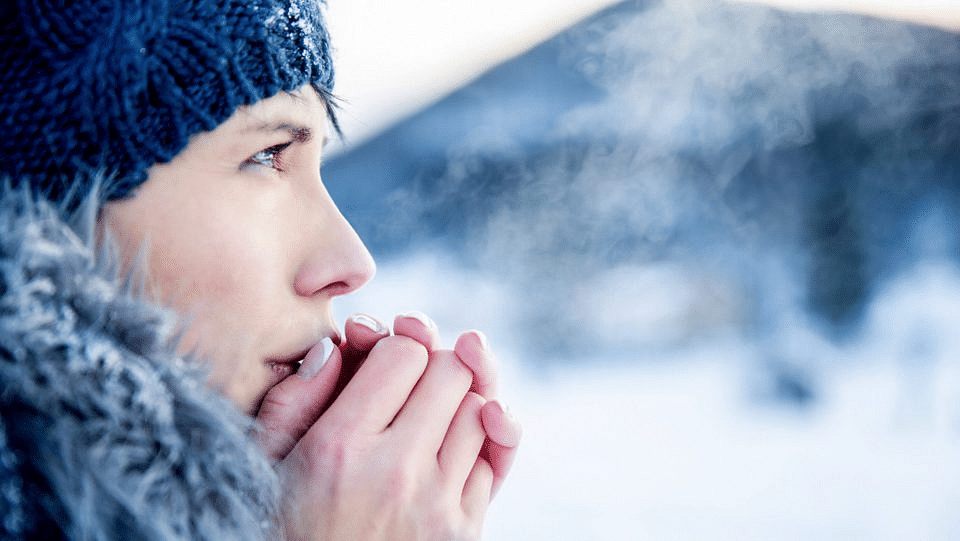
2. Blow hard from your mouth onto your hands. How did you find the air from your mouth as compared to the air around you? Was it hotter or cooler?
Ans. On blowing hard from the mouth onto the hands, the air from the mouth feels hotter as compared to the air around.
3. Now put your hands at some distance from your mouth and blow again. Does the air from your mouth feel warm? Why?
Ans. When the hands are placed at some distance from the mouth and the air is blown again, this time the air from the mouth does not feel much warmer. This is because, due to the distance from the mouth, the air gets mixed up with outside air and thus becomes cooler.
Think and tell
1. Can you think of any other way in which you use the warmth from your breath?
Ans. Another way in which we can use the warmth of our breath is when someone gets swelling and redness in the eyes or some warm breath on a piece of cloth or handkerchief and quickly planning it in the swollen part or red eyes gives some relief to the person.
2. Fold a piece of cloth 3-4 times. Now bring it close to your mouth and blow hard on it. Did the cloth become warm?
Ans. Yes, the cloth has become warm.
3. Have you ever burnt your tongue when you ate or drank something that was too hot? How do you cool some food when it is too hot?
Ans. Yes, I had once burnt my tongue on drinking very hot tea. When some food is very hot, I cool it by blowing on it, by keeping it in a broad container under a fan.
4. If you were to cool these three hot things – dal, roti, rice – in which ways you do so?
Ans. Dal, roti, and rice can be cooled by keeping them in a broad container under a fan and also by blowing air on them from the mouth.
5. For what other things do you blow air from your mouth?
Ans. The other things for which I blow air from my mouth are:
(i) For whistling
(ii) For playing with a firkin
(iii) On erasing the notebook with an eraser the rubber particles are removed by blowing air on them.
(iv) For cleaning the spectacles.
Picture-1
1. Picture 1- Mini tried to cool her tea by blowing on it. Which do you think will be hotter – Mini’s tea or the air she blew from her mouth?
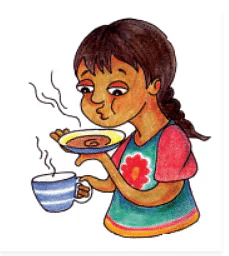
Ans. Mini’s tea would be hotter as compared to the air blown blew from her mouth.
Picture-2
1. Sonu was feeling very cold. He kept blowing on to his hands. Now think and write, which will be cooler – Sonu’s hand or his breadth.
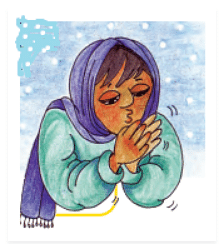
Ans. Sonu’s hand will be cooler as compared to the air blown by him.
Blow in Different Ways
1. Make whistles of the things given below. Write in a sequence from the loudest to the slowest whistle.
– Wrapper of a toffee
– A leaf
– A balloon
– The cap of a pen
– Any other thing
Ans. The sequence from the loudest to the softest whistle is as follows:
· The cap of a pen
· By putting fingers in the mouth
· By wrapping a toffee
· By a balloon
· By a leaf
12. Have you seen people with different musical instruments like flute, dholak, been… guitar, mridang, etc? Can you recognize their sounds with your eyes closed? Find out more about this musical instrument. Collect their picture.
Ans. Yes, I have seen and can recognize the sounds of flute, dholak, been, guitar, mridang, etc.
These instruments are discussed below:
(i) Flute: It is made up of wood and it is played by blowing air from the mouth.
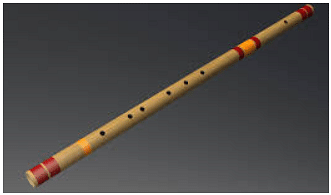
(ii) Dholak: It is made up of wood and leather and it is played by tapping hard by both hands.

(iii) Been: It is made up of wood and played by blowing air from the mouth.
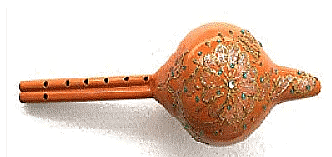
(iv) Guitar: It is made up of wood and metal strings and played by fingers.

(v) Mridang: It is made up of wood and copper and it is played by tapping hard with both hands.
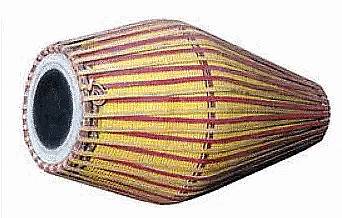
Write
1. Can you name some things which produce melodious or pleasing sounds when we blow into them?
Ans. Some of the things which produce melodious or pleasing sounds when we blow into them are been flute, pungi, shehnai, banjo, etc.
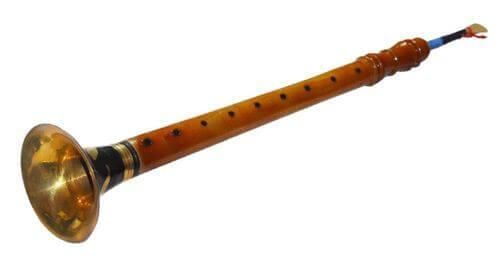 Shehnai
Shehnai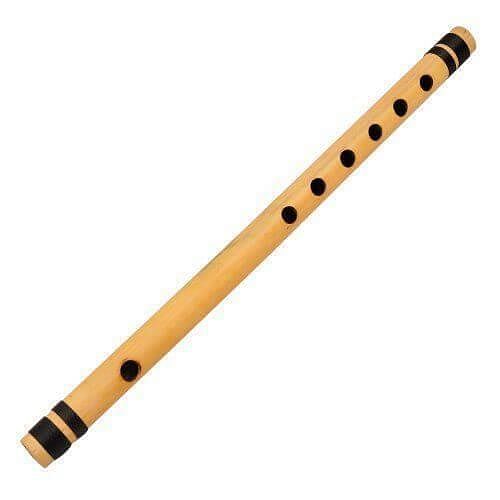 Flute
Flute
Do this and Discuss
1. Have you seen someone blowing on their spectacles, to wipe them clean? How does the air from the mouth help in cleaning the spectacles?
Ans. The air blown from the mouth is hot and the glass of the spectacles is comparatively colder. The hot air we breathe out contains water vapors which turn into tiny droplets of water when it comes in contact with the colder glass. This makes the glass moist and hazy.
2. Take a glass. Bring it near your mouth and blow hard on it. Do this two or three times. Does the glass look hazy?
Ans. Yes, a mirror can also be made hazy in the same way. On blowing air from the mouth on the mirror, the mirror becomes moist. The air blown from the mouth is hot and the mirror is cold. The hot air that we breathe out contains water vapors which turn into tiny droplets of water when it comes in contact with the colder mirror. This makes the mirror moist and hazy. The air blown from the mouth is wet.
3. Can you make a mirror hazy in the same way? Can you tell by touching the mirror what made it hazy? Is the air you blew from your mouth dry or wet?
Answer: Yes I can make the mirror hazy as well. When we blow the air, the moisture formed by the air blown comes in contact with the mirror which makes the mirror look hazy. The air blowing from the mouth is wet.
4. Put your hand on your chest, when you breathe in, does your chest come out or go in?
Ans. On putting my hands on the chest, when I breathed in, my chest comes out.
5. Measure your chest
– Take a deep breath in, Ask your friend to measure your chest with a thread. Measurement..
– Now breathe out. Again ask your friend to measure your chest. Measurement …
– Was there any difference in the two measurements of your chest?
Answer: Measurement of chest when I take a deep breath in is 25cm.
-The measurement of the chest when I breathe out is 21cm.
-Yes, there is a difference in the two measurements, when we breathe in the chest comes out and measures more. While we breathe out, the chest goes in and measures less.
How many breaths in one minute
1. Put your finger under your nose. Can you feel any air when you breathe out from your nose?
Ans. Yes, I can feel the air when I breathe out from your nose.
2. Count how many times in one minute do you breathe in and breathe out?
Ans. On counting, I breathe in and out about 20 times in a minute.
3. Jump 30 times. Did you feel breathless?
Ans. Yes, on jumping I feel breathless.
4. Now again count how many times in one minute you breathe in and out.
Ans. On counting after jumping, I breathed in and out about 26 times.
5. What was the difference in your count before and after jumping?
Ans. I breathed about 6 times more after jumping. The difference in the count before and after jumping shows that the breathing rate increases after jumping.
The Clock Inside you
1. You have all heard the ‘tick-tick’ of the clock. Have you seen a doctor using a stethoscope to listen to your chest? What do you think she hears? Where is the sound coming from? Is there a clock inside your chest that keeps ticking away?
Ans. Yes, I have seen a doctor using a stethoscope. She hears the heartbeat by using a stethoscope. This sound comes from our hearts. No, there is no clock inside our chest that keeps ticking away, but the heart lies on the left side of the chest that beats continuously.

Snake Tells flow of air!
1. Stand with this snake below a fan. Look in which direction it moves. Take this paper snake to different places and observe its movement.
Ans. On taking this snake below a fan, it moves in the anticlockwise direction. This is because here the air is moving downwards.
2. Can you understand from the movement of the snake if the air is moving upwards or downwards?
Ans. Yes, the direction of the air can be easily understood by observing the movement of the snake. If the snake moves in the direction of the clock it shows that the air is moving upwards. When the snake moves in the opposite direction this shows that the air is moving downwards.
What we have Learned
1. While playing Amit hit a wall. His forehead was swollen. Didi immediately folded a scarf (4-5) times, blew on it, and kept it on Amit’s forehead. Why do you think Didi did this?
Ans. After hitting on the wall. Amit’s forehead would have swollen and become hotter. Didi folded a scarf, below it and kept it on Amit’s forehead because she might have learned this from her elders but it is a wrong practice. Actually, it does not cure the pain, but on blowing, the scarf becomes a little warmer and gives some relief to the pain and swelling.
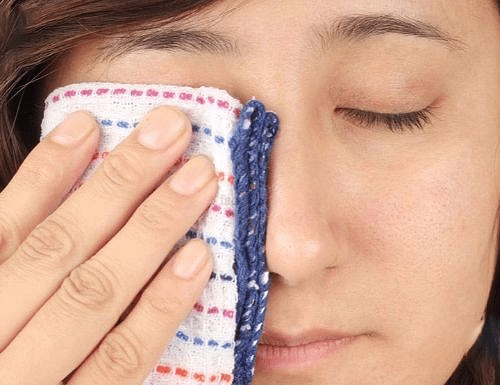
2. We blow to cool hot things as well as to warm them. Give examples of each.
Ans. Example, when we blow to cool hot things:
(i) A cup of tea (ii) any hot food etc.
Example when we blow to warm a cold thing. Our hands in the winters.
|
34 videos|240 docs|41 tests
|
FAQs on NCERT Solutions for Class 5 EVS Chapter 15 - Blow Hot, Blow Cold
| 1. What is the article "Blow Hot, Blow Cold" about? |  |
| 2. How many breaths do we take in one minute? |  |
| 3. What is the "Clock Inside You"? |  |
| 4. What does the snake tell us about the flow of air? |  |
| 5. What is the significance of NCERT Solutions in the article? |  |

|
Explore Courses for Class 5 exam
|

|



















